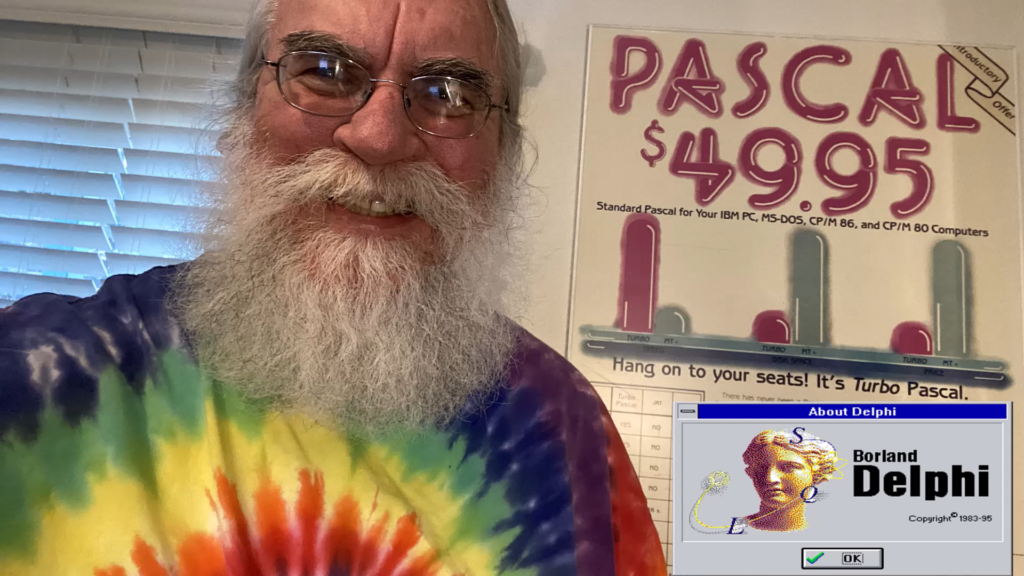This week I gave a presentation, demo and participated in Live Q&A at the Embarcadero CodeRage 2025 online developer conference. My session showed how to use AI tools including ChatGPT v5, Claude Sonnet v4.5, Gemini v3 to build the project and code for a Multi-Device Solar System Text Adventure game using Embarcadero Delphi 13 and READ MORE
Category: Delphi Programming
Quick David I fun with Copilot and Hedra
Taking a quick break from Delphi programming, I wanted to see if I could take one of my selfie pictures and do some quick “modern AI” manipulations using Copilot and Hedra prompts. I started with a selfie picture of me in my home office: That me standing next to the framed Turbo Pascal v1 ad READ MORE
Celebrating the 30th Anniversary of Delphi version 1.0’s Launch
By David Intersimone “David I” – Friday, February 14, 2025 Today we celebrate the 30th anniversary of the launch of Delphi version 1.0 on Valentine’s Day, February 14, 1995, at the Software Development West Conference in San Francisco California. More that 12 years of continuous IDE, language, tools and library development led up to the READ MORE
Technology News Worth Reading
Here are a few technology news stories that I’ve read in the past week or so. How to Convert a PDF to PNG or JPG in Java This article reviews three Conversion APIs that will allow you to convert any PDF document into an image. This includes conversion to a PNG or JPG array with READ MORE
New in C++Builder/Delphi 10.4.1 IDE: Package LibSuffix Auto Choice
The C++Builder and Delphi Project | Options | Description page allows developers to Choose and Set build target configurations Write a description for the package Set strings for the package library filename’s prefix, suffix and version Define the use of the package (designtime, runtime or both) Specify how the package is built (rebuild as needed READ MORE

